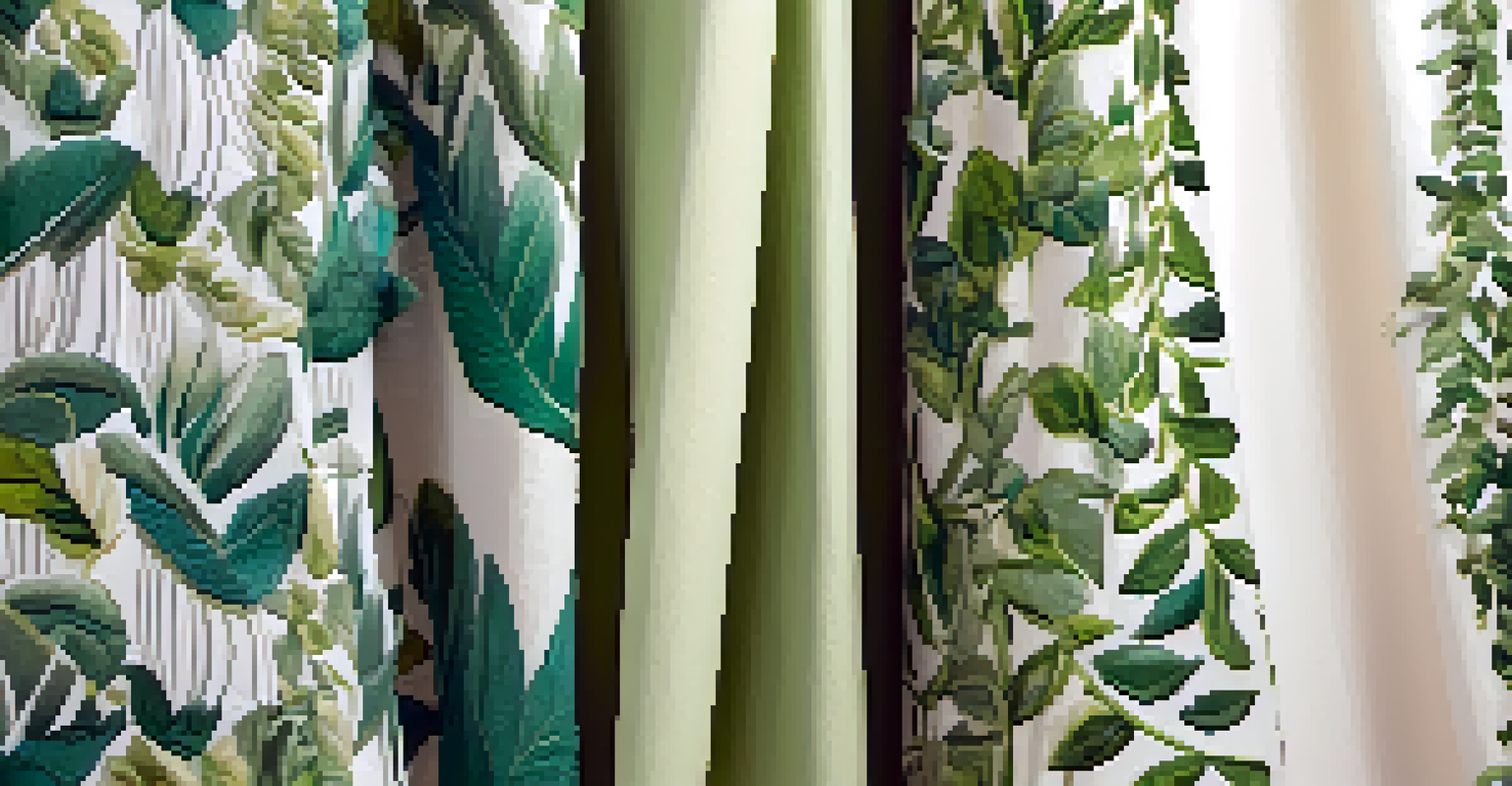Global Collaborations: Cross-Cultural Influences in Fashion

Understanding Cross-Cultural Influences in Fashion
Fashion is a dynamic field that thrives on inspiration from various cultures. These influences come together to create unique styles that resonate globally. For instance, the fusion of Western and Eastern designs often leads to innovative collections that appeal to a wider audience.
Fashion is a language that creates itself in clothes to interpret reality.
By blending traditional elements with modern aesthetics, designers can tell stories that reflect their diverse backgrounds. This melding of cultures enriches the fashion landscape, allowing for a greater expression of identity and creativity. It’s fascinating to see how a simple garment can carry the essence of multiple cultures.
Ultimately, these cross-cultural influences not only enhance creativity but also encourage dialogue and understanding among different communities. In a world that is increasingly interconnected, fashion serves as a powerful medium for sharing ideas and fostering collaboration.
Famous Fashion Collaborations and Their Impact
Throughout history, there have been iconic fashion collaborations that highlight the beauty of cultural exchange. Take the collaboration between Louis Vuitton and Takashi Murakami, for instance. This partnership merged luxury fashion with pop art, resulting in a collection that celebrated both Western and Japanese aesthetics.

Another great example is the partnership between H&M and various international designers, which has brought high fashion to the masses. These collaborations often introduce consumers to new cultural perspectives, making fashion more accessible and diverse. Each collection tells a story, inviting shoppers to explore different cultural influences.
Cultural Fusion Enhances Fashion
Blending traditional and modern styles creates unique fashion narratives that resonate globally.
These partnerships illustrate how collaboration can redefine fashion norms and push creative boundaries. It’s a reminder that fashion is not just about clothing; it’s a reflection of our shared cultures and experiences.
The Role of Social Media in Fashion Collaboration
Social media has revolutionized the way fashion collaborations are conceived and promoted. Platforms like Instagram and TikTok allow designers and brands to showcase their work to a global audience instantly. This visibility fosters a sense of community and encourages collaborative projects across borders.
Style is a way to say who you are without having to speak.
Moreover, social media influencers play a crucial role in shaping trends and highlighting cross-cultural fashions. By sharing their unique styles and experiences, they inspire their followers to embrace diverse fashion choices. This dynamic interaction between influencers and audiences enhances the reach of collaborative efforts.
As a result, brands can tap into different cultural narratives and engage with consumers on a personal level. This connection not only elevates brand visibility but also nurtures an appreciation for the rich tapestry of global fashion influences.
Sustainable Fashion and Global Collaborations
As the fashion industry moves toward sustainability, global collaborations are becoming vital in promoting eco-friendly practices. Designers from different parts of the world are coming together to create collections that prioritize ethical sourcing and production methods. This collaborative approach allows for the sharing of best practices and innovative solutions.
For example, initiatives like the ‘Fashion for Good’ program encourage brands to work together in finding sustainable alternatives. By pooling resources and knowledge, these collaborations can lead to more impactful change within the industry. This is especially important as consumers increasingly demand transparency and responsibility from brands.
Social Media Drives Collaboration
Platforms like Instagram and TikTok enable brands to showcase diverse fashion influences and connect with global audiences.
Sustainable fashion is not only about the materials used but also about the stories behind them. When cultures unite to promote sustainability, they create a powerful narrative that resonates with consumers and inspires positive action.
Global Fashion Weeks: A Hub of Collaboration
Fashion weeks around the world serve as vital platforms for cross-cultural collaborations. Events like Paris Fashion Week and New York Fashion Week showcase a blend of local and international designers, creating an exciting melting pot of styles and ideas. This diversity not only elevates the event's prestige but also highlights the importance of global influences in fashion.
At these events, designers often draw inspiration from their cultural roots while also embracing contemporary trends. This interplay results in collections that are both innovative and reflective of a global narrative. It’s an opportunity for emerging designers to gain visibility and for established brands to explore new creative avenues.
Moreover, global fashion weeks foster networking opportunities, allowing designers from different backgrounds to connect and collaborate. This spirit of cooperation is essential for the growth of the fashion industry, ensuring it remains vibrant and responsive to cultural shifts.
Cultural Appropriation vs. Cultural Appreciation
A critical conversation in the realm of fashion is the distinction between cultural appropriation and cultural appreciation. While collaborations can celebrate diversity, they can also inadvertently cross lines that lead to appropriation. It's essential for designers to approach cultural elements with respect and understanding.
Cultural appropriation occurs when elements of a culture are used without permission or understanding, often leading to a commodification of traditional practices. On the other hand, cultural appreciation involves a respectful engagement with another culture, often through collaboration with its representatives. This nuanced understanding is key to fostering genuine connections between cultures.
Sustainability through Global Efforts
Collaborative initiatives in fashion are essential for promoting eco-friendly practices and ethical sourcing.
By prioritizing appreciation over appropriation, the fashion industry can create more authentic and respectful collaborations. This approach not only enriches fashion but also honors the cultures that inspire it.
The Future of Global Collaborations in Fashion
Looking ahead, the future of global collaborations in fashion is bright and full of potential. As technology continues to bridge distances, we can expect more innovative partnerships that transcend geographical boundaries. This evolution will likely lead to even richer cross-cultural exchanges and groundbreaking designs.
Emerging designers from diverse backgrounds are now gaining access to global markets, thanks to online platforms. This democratization of fashion allows for a wider range of voices and perspectives to be heard, fueling creativity and collaboration. It’s an exciting time for the industry as it becomes increasingly inclusive.

Ultimately, the future of fashion lies in its ability to adapt and grow through collaboration. By embracing diverse influences and fostering respectful exchanges, fashion can continue to evolve in ways that reflect our interconnected world.